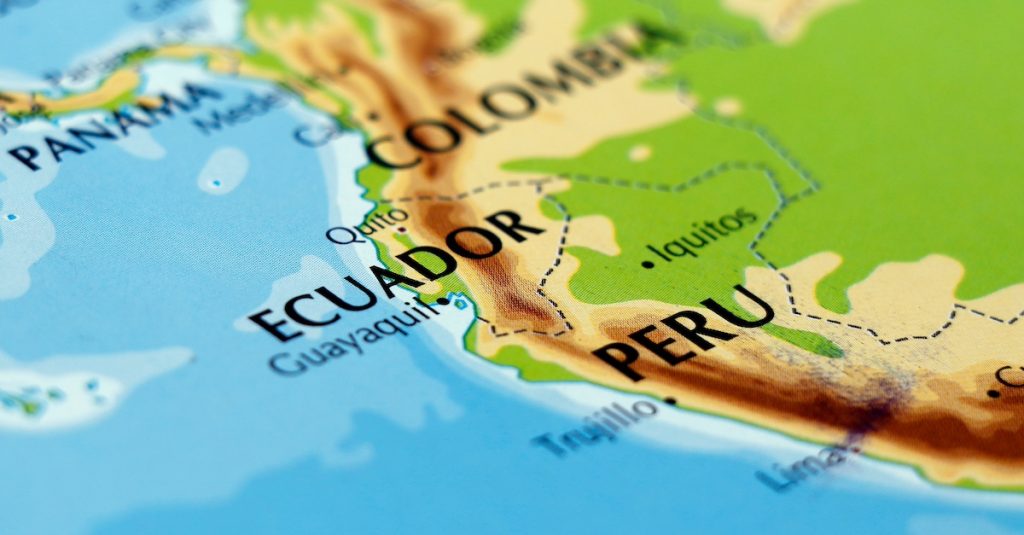Peru has initiated a state of emergency along its Ecuadorian border to bolster national security. This decisive action, announced amid Ecuador’s own internal conflicts, reflects Peru’s commitment to safeguarding its citizens.
The state of emergency aims to prevent the infiltration of subversive groups from Ecuador, where military efforts against criminal gangs are ongoing. Travellers are urged to be cautious as Peru strengthens border controls and increases military presence.
Background and Context
In light of the ongoing conflicts within Ecuador, the Peruvian government has declared a state of emergency across its northern border region with Ecuador. This decision, officially made public on January 12, 2024, follows Ecuador’s own 60-day state of emergency declaration. The move underscores the volatile situation in Ecuador, where military actions target organised criminal syndicates.
The Peruvian state of emergency serves as a precautionary strategy to avert the possible spillover of violence and crime. Peru aims to protect its territories from being infiltrated by subversive elements amid the tumult within its neighbouring country.
Security Measures and Implementations
With the declaration in place, Peru is set to deploy national police and military forces along the Ecuadorian border. These forces will support existing personnel, enhancing surveillance and control over entry and exit points for both nationals and foreigners.
Travellers are advised to anticipate increased security checks and adhere to local instructions to ensure their safety. Authorities stress the importance of vigilance and compliance amid heightened military activities.
Impact on Travel and Tourism
Given the present conditions, the Foreign, Commonwealth and Development Office (FCDO) has issued updated travel advisories. Tourists are recommended to remain vigilant when travelling to regions near the border, following any instructions issued by local authorities.
The FCDO advises against all non-essential travel to several coastal provinces of Ecuador. The areas affected include Esmeraldas, Manabí, and Santa Elena, among others. However, transit within Guayaquil Airport, including travel to the Galápagos Islands, remains unaffected.
Entry Requirements and Restrictions
Individuals planning to enter Ecuador from Peru via land are required to present a criminal record certificate from their country of residence over the past five years. This requirement highlights the ongoing cross-border coordination efforts to maintain security.
Air travel to Ecuador is not subjected to similar restrictions, only land border crossings require additional documentation.
The reinforcement of security measures and entry prerequisites underscores the regional emphasis on maintaining law and order amidst the prevailing challenges.
Official Statements and Guidance
The Peruvian government’s actions are supported by official advisories from the UK Foreign, Commonwealth and Development Office. These guidelines emphasize the preventive nature of the measures, aiming to mitigate risks associated with the regional instability.
Statements urge tourists and residents alike to follow safety directives and remain informed about the current security situation.
Strategic Considerations
Peru’s decision reflects its strategic stance on national security in response to external threats. The government is focused on creating a fortified border environment to deter potential incursions by hostile groups.
By deploying security forces and increasing surveillance, Peru demonstrates its proactive approach to maintaining stability and public safety amidst complex regional dynamics.
Conclusion of Discussion
The declaration of a state of emergency along Peru’s border with Ecuador represents a critical security measure. This action underscores the complexity of regional geopolitics, highlighting Peru’s commitment to proactive defence strategies to protect its citizens.
By reinforcing security protocols, coordinating with international advisories, and adjusting travel recommendations, Peru aims to ensure safety and stability during these uncertain times.
Peru’s emergency measures signify a proactive response to regional instability, prioritising national security and public safety. The situation demands ongoing vigilance and adherence to official guidelines to navigate potential risks effectively.

